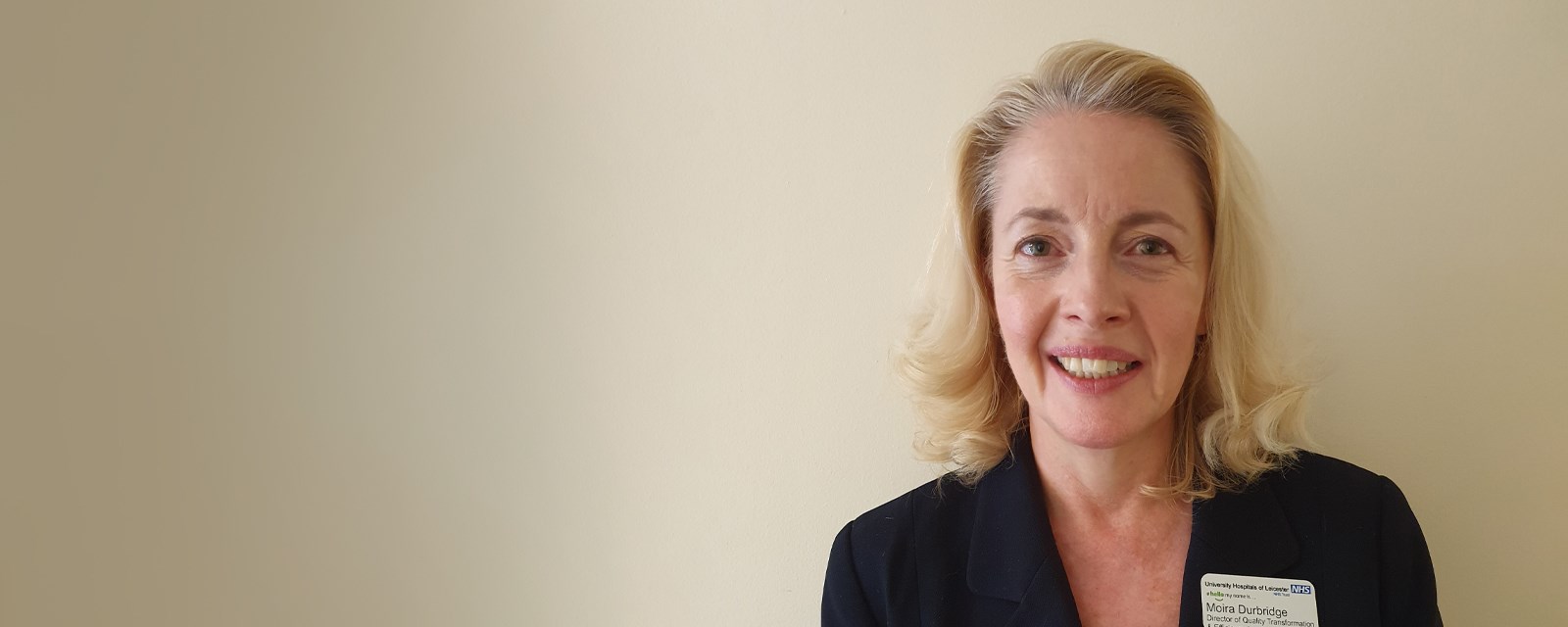
A day in the life of Moira Durbridge, President of the Patient Safety Section
I live in rural Derbyshire and have an hour’s drive into work at one of the hospitals in Leicester. There’s no such thing as a typical day for me – one of the great things about my job is the huge variety that goes with it.
I have the slightly unwieldy title of Director of Quality Transformation & Efficiency Improvement for University Hospitals of Leicester NHS Trust. I lead a 30-strong team focused on organisational transformation and quality improvement. We work on introducing system efficiencies that will have a direct impact on improving the quality of patient care.
Essentially this means working with clinical management groups (CMGs) across the trust to help them plan and execute efficiency and improvement plans. We find out what their priorities are and what support they need to deliver the improvements in patient care that they are aiming to achieve. One of the joys of the job is that doing the right thing in terms of efficiency is almost always the right thing in terms of quality outcomes for patients.
A big part of the work we do is looking at ways of adopting quality innovations in parallel across the trust and the system. An example coming out of the pandemic has been our virtual wards. Rather than all Covid patients coming into hospital they are given a mobile phone and a pulse oximeter and cared for at home through daily virtual ward rounds. If they become poorly, they could come into hospital, but most stay at home. We’ve had outstanding results in terms of patient experience and have had very good outcomes, with no out-of-hospital deaths.
We can already see how the same virtual ward concept could be introduced in other areas such as heart failure, haematology and respiratory health and how well it could work for newly diagnosed adolescent diabetes patients.
Another area we’re working on is helping to improve theatre efficiency which in turn helps reduce the backlog in waiting lists. We look at getting things organised around clinicians in different ways – looking at timetables, theatre sessions, job plans and so on – so that they can deliver care more efficiently.
I usually work through the day, grabbing a snack to keep me going and then eating properly with my family in the evening.
About two thirds of my time is spent on work at the trust, which might include consultant interviews, disciplinary panels and performance review meetings, as well as my improvement and transformation work.
The rest of the time I’m working with system-wide partners to develop our local Integrated Care System, which is all about delivering seamless patient care. Instead of care finishing at the hospital door and then starting back up again in primary care, we’re looking at ways of making a much smoother patient journey. It’s a fantastic opportunity to implement proper system transformation, eliminating duplication, deciding which services are best provided and where, all through a quality lens, while ensuring the money is spent on the right things.
I also continue to work clinically as a critical care nurse. During Covid, I very much wanted to support the frontline effort so went back into ITU part time, mostly working night shifts and juggling this with my corporate role. It was a real privilege to care for Covid patients and support my colleagues on the Unit.
I find that keeping up with my clinical practice gains me clinical currency in my main role. It means I can have a different sort of conversation about quality and safety in practice when sitting down with clinicians.
Making the decision to move from full-time clinical practice into patient safety was difficult, but a colleague persuaded me that my skill set was the right match for the job. All through my career, the advice and support I’ve received from colleagues and mentors has been – and continues to be – invaluable, as has networking within the national patient safety community.
There’s always more work to do than there are hours in the day and the temptation can be to keep your head down. But networking is crucial. It’s only when you get out and meet your peers through organisations like the RSM that you see what others are working on, how they deal with the same issues that you are facing, and the innovative ways in which they are solving problems.
I’ve worked for the NHS for almost 38 years now and when I reflect on my career, it’s almost certainly the people I work with who have made it so rewarding. I’m lucky enough to work with talented and inspiring people who share a common purpose in improving patient outcomes.
At the end of the day, listening to music and reading poetry are the ways I relax. Unless, of course, Arsenal are playing. As an East London girl at heart, I’ll be cheering them on from the sofa.
The RSM Patient Safety Section provides a forum for discussion and debate concerning all aspects of the delivery of safe care. It is a multidisciplinary Section with members including educationalists, systems engineers, pharmacists, nurses and patient representatives. Find out more information about the Section.
